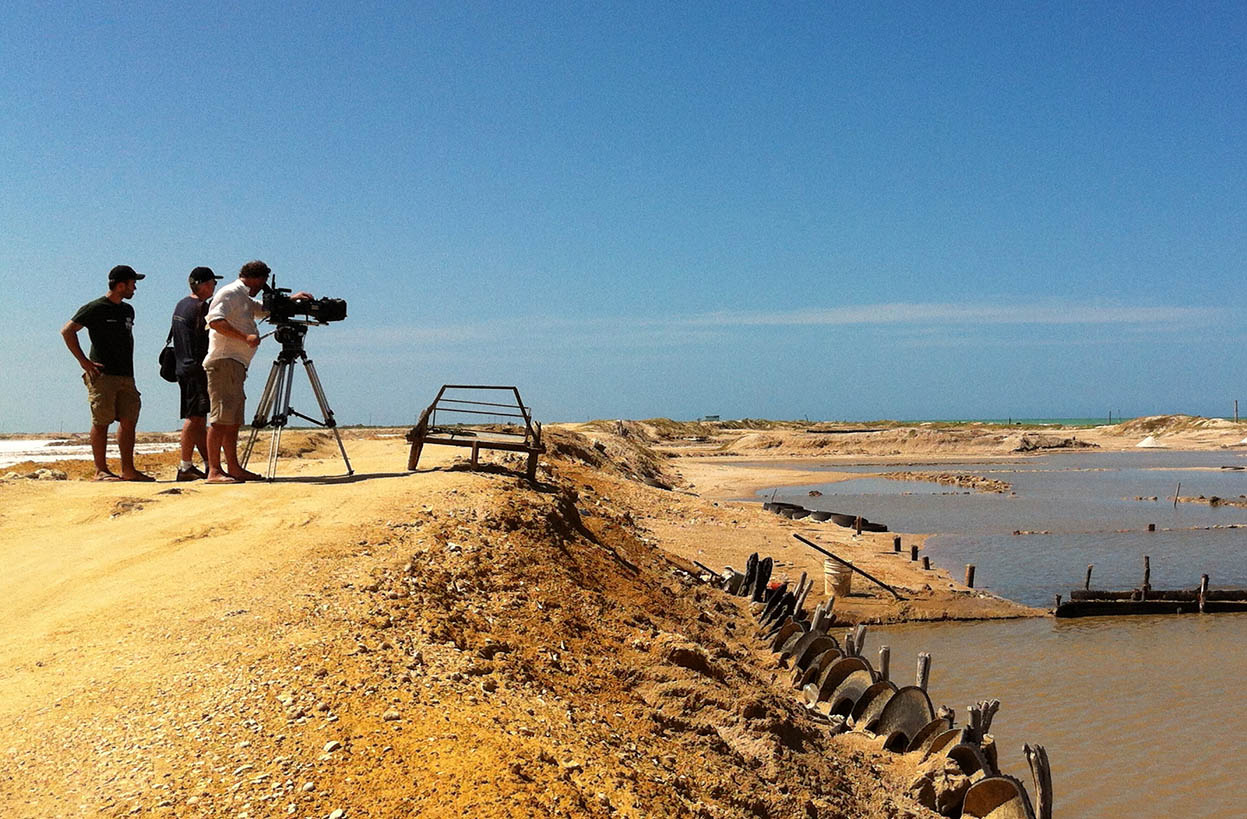[dropcap]A[/dropcap]mid an ongoing peace process with leftist guerrillas and a record devaluation of the Colombian peso, international coverage of the Andean nation has overlooked another sweeping change: a booming film industry.
With generous policies for both domestic and foreign production, burgeoning local talent, and the choice between picturesque nature and cosmopolitan cities, the country has emerged as a new force in Latin American cinema. At the same time, Colombians are trying to figure out what that growth means for its image abroad.
This year, Colombian director Ciro Guerra’s “Embrace of the Serpent” (El Abrazo de la Serpiente) and César Augusto Acevedo’s “Land and Shade” (La Tierra y la Sombra) garnered a total of four prizes at the renowned Cannes Film Festival.
[quote]”Despite big improvements for independent Colombian cinema … people still want to watch ‘The Fast and the Furious’”[/quote]
Both hits had received grants from the Colombian Film Fund, established in 2003 alongside a tax incentive to support national cinematography. In recent months, an additional $14 billion pesos have been directed towards the domestic production of fiction films, documentaries, and animated pictures.
At the same time, foreign directors, producers, and scriptwriters are packing their bags for Colombia to take advantage of the largest cash rebates in the region. The country’s Ministry of Commerce and Ministry of Culture are behind the Film Law, which took effect in 2013.
Filmmakers who contract the services of Colombian companies receive up to a 40 percent reimbursement for production costs, as well as 20 percent for logistics, including transportation, lodging, and catering.
In order for international shoots to receive the benefits, Proimágenes — the film commission and promotion arm of Colombia’s Ministry of Culture — takes into consideration the positive influence on the local movie industry and the depiction of the country.
Over the last several years, 18 foreign productions have been greenlit, with eight slated for 2015. Although the majority of the films stem from the United States, a handful also hail from Argentina, Spain, and France.
Colombian legislation has attracted prestigious Hollywood names. “The 33,” the first international movie to take advantage of the refunds, starred Antonio Banderas and was shot in mines outside of Bogotá.
Elijah Wood’s horror flick “The Boy” was filmed on the periphery of Medellín to double for Colorado. Mickey Rourke was the lead actor in “Blunt Force Trauma,” shot in Cundinamarca.
This year, “The Lost City of Z,” with Robert Pattinson and Charlie Hunnam, took advantage of leafy overgrowth in the Sierra Nevada and vast deserts in La Guajira.
From deficient infrastructure to slow turnaround for permits, incoming filmmakers face challenges to efficiency. Nevertheless, local institutions are working to streamline the necessary paperwork and increase the availability of native crewmembers, stages, and equipment.
In fact, the Bogotá Chamber of Commerce is currently finishing a study of audiovisual talent among Colombians in an attempt to increase technical skills, which would further reduce costs for international crews.
The growing interest in Colombia as a film destination is moreover a boon to the national economy. Between local extras, crewmembers, and technical assistants, the Ministry of Culture estimates that international movie productions have created at least 5,000 Colombians jobs since 2013.
Foreign movie budgets typically outsize their Colombian equivalents. Since the implementation of the Film Law, approximately $83 billion pesos have been spent on in-country productions.
Meanwhile, Colombia is trying to keep up with growing film popularity at home. The population will go to the movies 60 million times in 2015, up roughly 30 percent since last year. As a result, the number of national cinema screens has skyrocketed from several hundred just a few years ago to 906 in 2015.
Venue quality has also increased accordingly, with large investments in speaker systems and accommodations for 3-D movies.
Nevertheless, Claudia Triana, Director of Proimágenes since its launch in 1998, explained to The City Paper that there is a battle in the Colombian market between international blockbusters and local films.
“Despite big improvements for independent Colombian cinema, the movies have trouble making it to the big screen. People still want to watch ‘The Fast and the Furious’,” she said.
Tied up in the explosion of new cinema is the portrayal of Colombia abroad, a sensitive issue for a population that has lived through decades of violence. On one hand, this year’s “Wild Magic”(Magia Salvaje), a documentary showcasing the nation’s astounding biodiversity to its citizens, hit record ticket sales and lit up countless screens on Avianca flights.
On the other, foreigners remain obsessed with gritty tales about Colombia’s former drug cartels.
In 2015, Tom Cruise stars in “Mena” as a smuggler for Pablo Escobar. The biopic has been filming in Antioquia, birthplace of the cocaine kingpin, and drew international media attention after a plane crash killed two members of the film crew in September.
The hit Netflix television series “Narcos,” which depicts the rise and fall of Escobar, was largely shot in Colombia and has raised debate in the nation over the entertainment value of its bloody past.
Spike Lee’s “Dirty Hands” (Manos Sucias) focused on coke trafficking on the Pacific Coast.
And Colombia’s first international co-production hit, “María Full of Grace” (María, llena eres de gracia), tells the story of a drug mule.
While we can expect to see more of Colombia on the big screen, audiences abroad will continue to request tales of the country that are anachronistic with its current modernity and progress.
“We refuse to censor foreign filmmakers,” said Claudia Triana. “Twelve years ago Colombia wasn’t even on the international radar. Now Colombian films are winning awards abroad, and the country is seen as a wonderful shooting destination with beautiful landscapes.”

